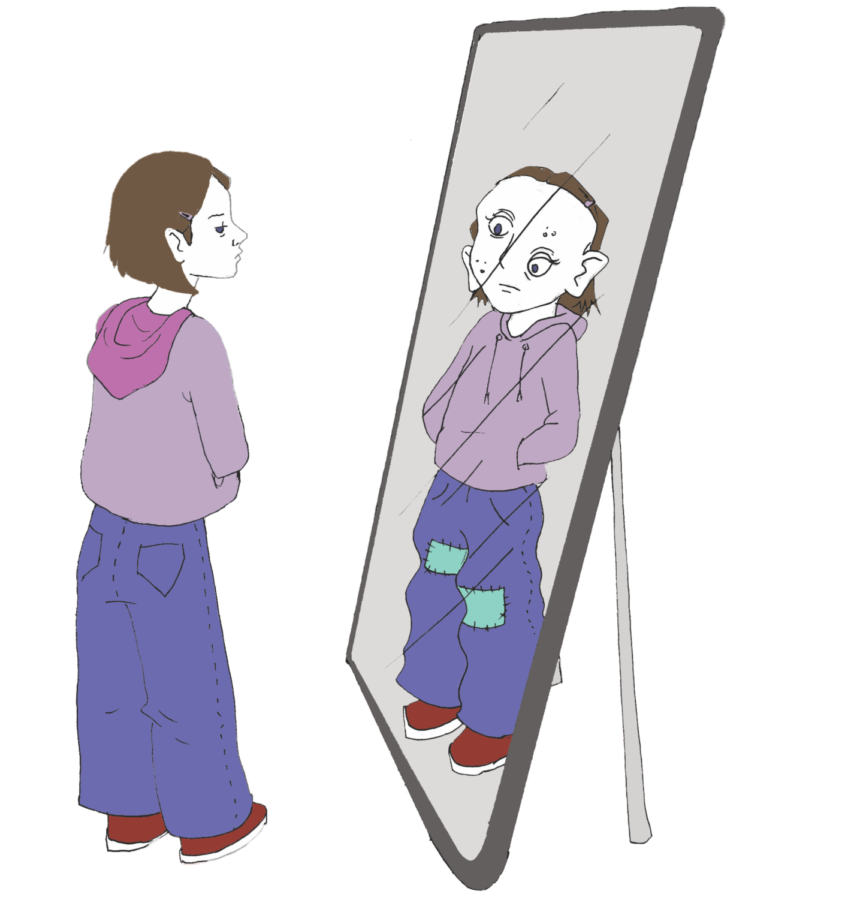How sports affect student self-image
“I feel like I have to meet that standard body type.” Said AWHS Frosh Jake Carrera.
Though sports are an important part of many students’ lives, they also have negative effects when it comes to how athletes perceive their bodies. Student athletes at AWHS believe that their teams and coaches hold high standards for how their bodies should look. More importantly, they believe meeting those standards is impossible.
To some student athletes, unachievable fitness body types can also set a standard that they need to reach. There are certain physical standards that can help ensure more success in the sport. If some don’t fit those standards that can create comparisons amongst teammates.
“It’s definitely easier to swim and play water polo if you’re really tall and have long arms, big shoulders, and a big back,” sophomore swimmer and water polo player, Haakon Lacy said. “It’s like there’s always a competition to be bigger and stronger than the next guy.” Required athletic wear for sports can also play a role in how young athletes form comparisons and insecurities. Students in watersports feel that it is a challenge to not to compare themselves to teammates when everyone is wearing the same uniform but have different body types. When teammates are keeping up with society’s “ideal body,” it is a mental struggle not to compete and compare with their co-competitors.
“In my sport, you are surrounded by a lot of guys who have really fit bodies, and everyone is very exposed so it’s hard to not compare yourself to others,” Haakon said.
Freshman swimmer and water polo player Jake Carrera shares the same opinion. In water polo and swimming a majority of their bodies are exposed to everyone at each match. While playing in games or swimming in meets, athletes often feel the judgment and that paves the way for new insecurities.
“I think that because you see other people that are being revealing with their bodies you kind of see that as the new standard for your body, and you kind of want to meet that standard yourself,” Jake said, “You also look at what people around you are thinking because when there are people in the stands for games, I feel like there could be possible judgment from that so I feel like I have to meet that standard of body type.”
Sophomore volleyball player Lindsey Jones feels similarly. She says that the volleyball athletic wear causes body dysmorphia for herself and she finds that her teammates share that experience as well, especially because of how tight the uniforms are.
“I feel like there is a stereotype for volleyball in general, especially because we are wearing very tight and short spandex to play our sport,” Lindsay said. “There is some dysmorphia in that part because of my teammates, and people will compare because you’re so vulnerable, and it puts a lot of pressure on you to compare yourself to them or to others.”
Senior volleyball and lacrosse player, Lyla Johnston also finds that it is easy to compare yourself to your teammates, especially when it comes to wearing uniforms.
“Even when you’re picking uniform sizes, and everyone’s picking a small, but you’re a medium or a large, that’s also an outside factor within the problem,” Lyla said.
When playing on a team, student athletes find themselves comparing their body types to others in the sport. Sports have proven positive effects on students and young athletes, but it is also very common for sports to take a toll on how students view themselves mentally.

Ila is a sophomore, in her first year of journalism. She loves her friends, music, and food. You can find Ila hanging out with her friends around town.

Delaney is a sophomore, in her first year of journalism. She loves the beach, hanging out with friends, and surfing. You can find her in a bookstore browsing.

Ava is a senior, starting her first year in journalism. She loves ear piercings, super spicy sushi from restaurants in San Francisco and roaming the aisles...







